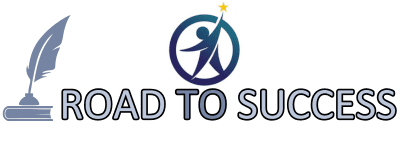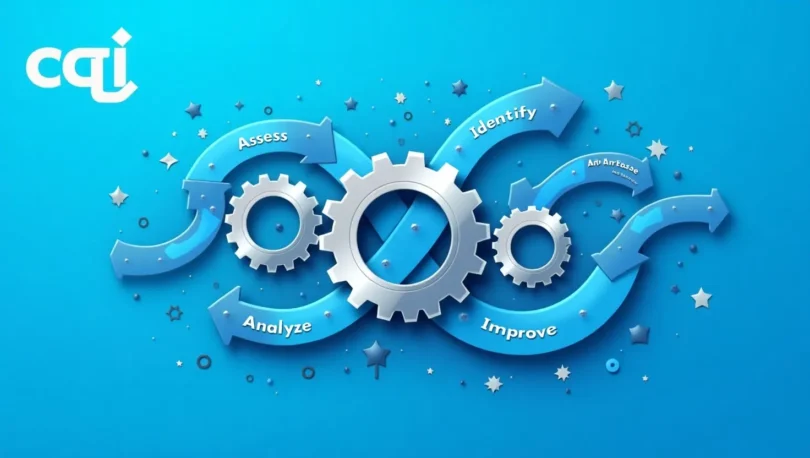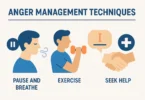Success isn’t built on luck or one-time efforts—it’s the result of consistent, intentional progress. This is where Continuous Quality Improvement (CQI) comes in. Whether in business, personal growth, or goal-setting, CQI is about refining processes, learning from feedback, and making small, steady improvements over time.
Unlike quick-fix solutions, CQI embraces long-term growth by focusing on incremental changes that lead to sustainable success. It’s the philosophy behind high-performing organizations, top athletes, and individuals who achieve extraordinary results through persistence and adaptability.
By adopting a CQI mindset, you shift from a rigid approach to one that embraces learning, self-reflection, and resilience. Instead of seeing challenges as roadblocks, you start viewing them as opportunities to analyze, adjust, and improve.
So, how can you apply CQI to achieve your goals, optimize performance, and build a resilient mindset? Let’s explore the strategies that make continuous improvement a game-changer.
Headlines
The Mindset Behind Continuous Quality Improvement
Applying Continuous Quality Improvement to Goal Setting
Creating Sustainable Growth with Continuous Quality Improvement
The Mindset Behind Continuous Quality Improvement
Developing a Growth-Oriented Thinking
One of the key foundations of Continuous Quality Improvement (CQI) is cultivating a growth-oriented mindset—a way of thinking that embraces progress, learning, and resilience. Without the right mindset, any strategy or system for improvement will eventually fail. This section explores how adopting a growth mindset, lifelong learning, and incremental progress can drive sustainable success in personal development and goal-setting.
The Growth Mindset and Its Role in Continuous Improvement
The growth mindset, a concept popularized by psychologist Carol Dweck, is the belief that abilities, intelligence, and skills are not fixed but can be developed over time. People with a growth mindset see challenges as opportunities, view failures as learning experiences, and embrace continuous improvement.
🔹 How a Growth Mindset Supports CQI:
- Encourages experimentation and adaptation, which are key to improving processes and habits.
- Reduces fear of failure by reframing setbacks as stepping stones to success.
- Fosters resilience and persistence, essential traits for sustaining improvement over time.
Example: Many successful entrepreneurs and high achievers, including Elon Musk and Jeff Bezos, have attributed their success to continuous learning and iterative problem-solving—a direct reflection of a growth-oriented thinking approach.
Lifelong Learning: The Engine of Continuous Improvement
A growth-oriented mindset thrives on lifelong learning—the habit of constantly acquiring new knowledge and refining skills. CQI isn’t just about short-term improvements; it’s about sustained progress over a lifetime.
🔹 Ways to Develop a Habit of Lifelong Learning:
- Read daily: Books like Atomic Habits by James Clear or Mindset by Carol Dweck reinforce the importance of continuous self-improvement.
- Seek feedback: Just as companies rely on performance metrics, individuals should regularly assess their progress and make adjustments.
- Engage in self-reflection: Journaling or tracking personal achievements helps reinforce improvement habits.
- Surround yourself with growth-minded individuals: Being in an environment that encourages learning fosters a continuous quality improvement culture.
Incremental Progress: Small Changes Lead to Big Results
A key principle of Continuous Quality Improvement is small, incremental changes that compound over time. Rather than focusing on massive overnight transformations, it’s more effective to take small, consistent steps—an idea that aligns with the Kaizen philosophy.
🔹 How Incremental Progress Leads to Sustainable Growth:
- Avoids burnout by making progress manageable and sustainable.
- Boosts motivation because small wins reinforce momentum.
- Creates long-term habits that become second nature over time.
Example: James Clear’s 1% improvement rule (from Atomic Habits) states that if you improve by just 1% each day, you’ll be 37 times better in a year. This simple but powerful concept aligns with the principles of CQI—continuous, gradual improvements lead to exponential growth over time.
Final Thought: The Mindset Shift That Drives Success
Adopting a growth-oriented thinking approach means embracing progress over perfection. Success isn’t about being the best overnight—it’s about being better than you were yesterday. By cultivating a growth mindset, committing to lifelong learning, and embracing incremental progress, individuals can unlock sustainable personal and professional growth through continuous quality improvement.
Kaizen Philosophy: The Power of Small Steps
The Kaizen philosophy is a powerful framework for Continuous Quality Improvement (CQI), emphasizing small, consistent improvements over time. Originating from Japan, Kaizen (which means “change for better”) has been widely used in business, manufacturing, and personal development to achieve sustainable success. Instead of relying on radical, overnight changes, Kaizen focuses on making tiny but meaningful adjustments that compound over time.
Understanding the Kaizen Approach to Continuous Improvement
Kaizen was first introduced in post-World War II Japan to improve efficiency in manufacturing, particularly in companies like Toyota. Over time, its principles expanded beyond business into self-improvement, goal-setting, and mindset growth.
🔹 Key principles of the Kaizen mindset:
- Small, steady improvements lead to big results: Progress should be gradual but consistent.
- Eliminate resistance to change: Instead of overwhelming yourself with drastic goals, focus on tiny, manageable improvements.
- Continuous learning and self-reflection: Improvement is a lifelong process that requires regular self-assessment.
This philosophy aligns perfectly with self-development, helping individuals build strong habits, improve productivity, and achieve long-term success without the stress of radical changes.
Why Small Steps Matter More Than Big Leaps
One of the biggest mistakes people make when trying to improve their lives is setting unrealistic goals. They aim for huge transformations in a short time, which often leads to frustration, burnout, and failure.
🔹 Kaizen teaches us that:
- Consistency is more powerful than intensity: A 1% improvement each day results in massive growth over time (James Clear’s Atomic Habits principle).
- Small actions eliminate procrastination: Starting small reduces mental resistance, making tasks feel easier and more achievable.
- Micro-changes create long-lasting habits: Instead of forcing drastic shifts, Kaizen helps develop natural routines that stick.
Example: Instead of saying, “I’ll read 50 books this year,” start by reading one page a day. Over time, this simple habit can evolve into a strong reading routine without overwhelming yourself.
Applying the Kaizen Mindset to Personal Growth and Goal-Setting
The beauty of Kaizen is that it can be applied to any area of life, from productivity and career growth to health and personal well-being.
🔹 How to integrate Kaizen into daily life:
- Set micro-goals: Instead of aiming to “get fit,” start by walking for 5 minutes a day.
- Make small but consistent progress: If you want to develop a lifelong learning habit, read just one article or book chapter per day.
- Measure progress and adjust: Keep a journal or use an app to track small wins. Even minor improvements should be celebrated.
- Eliminate unnecessary obstacles: If you struggle with focus, use lean thinking principles to remove distractions and improve efficiency.
Kaizen in Action: The Secret to Sustainable Growth
By following Kaizen principles, you avoid burnout, stay motivated, and gradually build a success-oriented mindset. This approach works in both personal development and business strategies, proving that slow, continuous progress beats rushed, inconsistent efforts.
Final Thought: Small Steps, Big Impact
Kaizen teaches us a valuable lesson: Sustainable success isn’t about sudden, massive changes—it’s about daily, tiny improvements that add up over time. By embracing Kaizen principles, individuals can unlock long-term growth, resilience, and a goal-setting strategy that truly lasts.
Applying Continuous Quality Improvement to Goal Setting
SMART Goals and Performance Optimization
When it comes to Continuous Quality Improvement (CQI), having a clear, structured framework for goal-setting is essential. This is where the SMART goal methodology plays a vital role. SMART goals help break down big ambitions into manageable, trackable actions, ensuring that improvements are both sustainable and measurable.
In this section, we’ll explore how SMART goals align with CQI principles, how they enhance performance optimization, and how you can implement them in mindset growth and personal development.
What Are SMART Goals?
The SMART framework provides a structured approach to setting and achieving goals, ensuring they are well-defined and attainable. SMART is an acronym that stands for:
- S – Specific → Clear and well-defined.
- M – Measurable → Quantifiable progress tracking.
- A – Achievable → Realistic and attainable.
- R – Relevant → Aligned with long-term objectives.
- T – Time-bound → Has a clear deadline.
🔹 Example of a Weak Goal:
“I want to be more productive.”
🔹 Example of a SMART Goal:
“I will increase my daily productivity by working distraction-free for 2 hours each morning, using the Pomodoro technique, for the next 30 days.”
By defining clear metrics and a timeline, SMART goals reduce ambiguity and make it easier to optimize performance and track progress.
How SMART Goals Support Continuous Quality Improvement
CQI is all about incremental progress and data-driven improvements. SMART goals provide the structure needed to ensure each improvement step is measurable and actionable.
🔹 SMART Goals Enhance CQI by:
- Providing Clear Direction → No more vague aspirations; each goal has a clear “what,” “why,” and “how.”
- Enabling Performance Tracking → Progress can be measured, allowing adjustments as needed.
- Improving Motivation and Focus → Specific and time-bound goals reduce procrastination and help maintain momentum.
- Ensuring Continuous Growth → The structured approach allows for ongoing refinements and improvements rather than haphazard efforts.
📌 Example in Business: A company using CQI might set a SMART goal like:
“Reduce customer service response time from 5 hours to 2 hours by implementing AI-driven chat support within the next 3 months.”
📌 Example in Personal Development: An individual focused on self-improvement might set a SMART goal like:
“Read one book per month on leadership and productivity for the next six months to develop better decision-making skills.”
Performance Optimization: Tracking and Improving Results
SMART goals provide the foundation, but achieving optimal performance requires a system to monitor, evaluate, and refine progress.
🔹 Key Strategies for Performance Optimization:
- Use Key Performance Indicators (KPIs): Measure success with quantifiable data. Example: If your goal is to improve focus, track the number of deep work hours per week.
- Leverage Feedback Loops: Regularly assess progress and adjust based on feedback.
- Apply the PDCA Cycle (Plan-Do-Check-Act): A continuous improvement process to refine actions over time.
🔹 Tools for Performance Tracking:
- Productivity Apps: Trello, Notion, or Todoist for goal management.
- Self-Reflection Journals: Writing down successes and challenges helps with self-monitoring.
- Accountability Partners: Working with a coach or mentor enhances goal adherence.
📌 Example of Performance Optimization in Action:
If your SMART goal is to increase daily exercise, you might track your progress using a fitness tracker and adjust based on weekly performance reviews.
Final Thought: Mastering SMART Goals for Continuous Improvement
SMART goals are a powerful tool for achieving sustained growth and efficiency. By ensuring goals are specific, measurable, and optimized for performance, individuals and businesses can implement CQI principles effectively.
📌 Action Step: Take a goal you currently have and rewrite it using the SMART framework. Then, develop a tracking system to monitor progress and optimize results over time.
The Role of Self-Reflection and Feedback
Continuous Quality Improvement (CQI) isn’t just about external changes—it’s equally about internal growth. Self-reflection and feedback play a crucial role in identifying strengths, addressing weaknesses, and refining strategies for personal and professional development. Without them, improvement becomes directionless, leading to stagnation instead of meaningful progress.
In this section, we’ll explore why self-reflection is essential, how feedback drives growth, and practical methods to integrate both into daily life.
Why Self-Reflection is a Key to Growth
Self-reflection is the process of looking inward to analyze actions, decisions, and behaviors. It allows individuals to understand their progress, recognize challenges, and adjust their mindset and strategies accordingly.
🔹 Benefits of Self-Reflection in CQI:
- Encourages mindfulness: Helps individuals stay aware of their habits and decision-making patterns.
- Promotes learning from experience: Mistakes and successes become valuable lessons rather than random events.
- Enhances goal alignment: Ensures daily actions align with long-term objectives.
- Reduces impulsive decision-making: Encourages thoughtful, strategic improvements rather than reactive changes.
📌 Example of Self-Reflection in Action:
- A professional seeking career growth can review weekly performance to identify areas for improvement and set clear objectives.
- An entrepreneur tracking business progress can reflect on past decisions to determine what worked, what didn’t, and why.
How to Practice Effective Self-Reflection
🔹 1. Journaling: Writing down thoughts, challenges, and lessons learned provides clarity and structure to self-reflection.
Example Prompt: What did I do well today? What could I have done better? What’s one lesson I learned?
🔹 2. Mindfulness and Meditation: Taking a few minutes daily to pause and reflect improves self-awareness and decision-making.
🔹 3. End-of-Day Reviews: Before sleeping, take 5 minutes to assess progress, setbacks, and next steps.
🔹 4. Monthly or Quarterly Evaluations: Set aside time to analyze long-term patterns and adjust strategies accordingly.
Feedback: A Catalyst for Continuous Improvement
While self-reflection provides internal awareness, feedback offers external insights. Whether from mentors, peers, or customers, feedback helps identify blind spots and uncover opportunities for refinement.
🔹 Why Feedback is Essential for Growth:
- Eliminates bias: Others may see strengths and weaknesses that you overlook.
- Encourages adaptability: Receiving constructive criticism fosters flexibility and growth.
- Enhances learning opportunities: Diverse perspectives introduce new ideas and methods for improvement.
📌 Example:
- A writer seeking to improve their content can collect feedback from readers to identify which topics resonate most.
- A business owner can use customer reviews to refine products and services.
How to Seek and Utilize Feedback Effectively
🔹 1. Choose the Right Sources:
- Seek mentors, coaches, or experts with experience in your area of improvement.
- Gather peer reviews or customer feedback for business-related growth.
🔹 2. Ask Open-Ended Questions:
Instead of just asking “Is this good?”, try:
- “What do you think I could improve?”
- “How did this impact you?”
- “What would you suggest for next time?”
🔹 3. Create a Feedback Loop:
- Receive feedback
- Analyze patterns (look for recurring points)
- Implement changes
- Request follow-up feedback
🔹 4. Develop a Growth Mindset Toward Criticism:
- View feedback as an opportunity, not an attack.
- Separate emotion from evaluation—focus on the message, not the messenger.
📌 Example:
A manager receiving employee feedback may notice communication issues that need improvement. By making small adjustments and following up, they create a positive, growth-driven work culture.
Final Thought: The Balance Between Self-Reflection and Feedback
Both self-reflection and external feedback are essential for sustained growth. While self-reflection sharpens internal awareness, feedback offers fresh perspectives for improvement. When used together, they create a powerful cycle of continuous quality improvement, ensuring long-term success in personal and professional endeavors.
📌 Action Step: Start a weekly self-reflection habit and request feedback from someone you trust. Then, track how these insights improve your decision-making and performance over time.
Creating Sustainable Growth with Continuous Quality Improvement
Building Resilience and Self-Discipline
When striving for Continuous Quality Improvement (CQI), challenges and setbacks are inevitable. The key to sustained progress lies in developing resilience and self-discipline—two qualities that separate those who persist and grow from those who give up too soon.
Resilience is the ability to bounce back from adversity, while self-discipline is the ability to stay committed to long-term goals despite difficulties or distractions. Together, they form the backbone of personal growth, enabling individuals to adapt, overcome challenges, and continuously refine their mindset and actions.
This section explores how resilience and self-discipline contribute to CQI, practical strategies for strengthening these qualities, and how to integrate them into daily life for sustained self-improvement.
The Role of Resilience in Continuous Improvement
Resilience is what allows individuals to learn from failures, embrace challenges as opportunities for growth, and push forward despite obstacles. Without resilience, even the best strategies for improvement can fail when faced with setbacks.
🔹 How Resilience Supports CQI:
- Encourages Adaptability: Enables individuals to adjust strategies when things don’t go as planned.
- Reduces Fear of Failure: Shifts focus from failure as a dead end to failure as a lesson.
- Promotes Emotional Stability: Helps manage stress and frustration without losing motivation.
- Strengthens Problem-Solving Skills: Builds the ability to think critically and respond effectively to challenges.
📌 Example of Resilience in Action:
- An entrepreneur facing business setbacks doesn’t quit but instead analyzes what went wrong, adapts strategies, and tries again.
- A student struggling in a subject doesn’t assume they’re “bad at it” but seeks new learning methods, practices consistently, and improves over time.
How to Develop Resilience
🔹 1. Reframe Challenges as Growth Opportunities
Instead of viewing obstacles as threats, see them as stepping stones to improvement. Ask:
- What can I learn from this?
- How will overcoming this make me stronger?
- What’s one small action I can take right now to move forward?
🔹 2. Build Emotional Regulation Skills
Handling stress and frustration effectively prevents burnout and discouragement. Techniques include:
- Mindfulness and meditation to stay present and reduce overreacting.
- Breathing exercises to calm the nervous system during stress.
- Journaling to reflect on experiences and emotions.
🔹 3. Strengthen Your Support System
Surrounding yourself with mentors, peers, and supportive communities can help build resilience.
- Seek constructive feedback and encouragement.
- Learn from those who have overcome similar struggles.
The Power of Self-Discipline in Achieving Long-Term Goals
Self-discipline is the ability to stay committed to your goals despite distractions, temptations, or temporary discomfort. It’s what separates those who take consistent action from those who get stuck in the cycle of procrastination and inconsistency.
🔹 Why Self-Discipline is Crucial for CQI:
- Ensures Consistency: Success isn’t about one-time efforts but about sustained, gradual improvement.
- Prevents Procrastination: Helps individuals take action even when motivation fades.
- Develops Long-Term Thinking: Encourages people to prioritize long-term success over short-term gratification.
- Strengthens Willpower: Builds the habit of delayed gratification, a key factor in success.
📌 Example of Self-Discipline in Action:
- A writer commits to writing 500 words daily for a book instead of waiting for “inspiration.”
- A fitness enthusiast follows a consistent workout schedule instead of exercising only when they feel like it.
How to Strengthen Self-Discipline
🔹 1. Set Clear, Actionable Goals
Self-discipline is easier when you have a clear direction. Use SMART goals (Specific, Measurable, Achievable, Relevant, Time-bound) to set objectives that keep you on track.
Example: Instead of saying, “I want to read more,” set a goal like:
“I will read for 20 minutes every day before bed for the next 30 days.”
🔹 2. Build Small Daily Habits
Discipline doesn’t come from big, dramatic actions but from small, consistent behaviors that build momentum over time.
- Start with tiny, achievable actions (e.g., write one sentence a day, do five push-ups).
- Focus on habit stacking—pair a new habit with an existing one.
Example: After brushing my teeth, I will meditate for one minute.
🔹 3. Reduce Temptations and Distractions
Make discipline easier by controlling your environment.
- Use app blockers to limit social media distractions.
- Keep workout clothes ready to make exercising seamless.
- Plan meals ahead to avoid unhealthy food choices.
🔹 4. Develop a “Do It Anyway” Mindset
Motivation won’t always be there, but discipline means taking action even when you don’t feel like it.
- Shift from emotion-based action (“I don’t feel like it”) to commitment-based action (“I do it because it aligns with my goals”).
Integrating Resilience and Self-Discipline for Continuous Growth
Resilience helps you bounce back from setbacks, and self-discipline keeps you moving forward even when motivation fades. Together, they create a mindset of continuous improvement, ensuring that you stay committed to long-term growth.
📌 Action Step:
- Choose one small action that strengthens either your resilience or self-discipline today.
- Track your progress over the next week and reflect on how it influences your personal growth.
Final Thought: Mastering the Art of Persistence
Building resilience and self-discipline isn’t about being perfect—it’s about consistently showing up, learning from experiences, and pushing through challenges with a growth-oriented mindset. Success isn’t about how fast you move but how consistently you keep going.
🚀 What’s one area in your life where you can apply resilience and self-discipline today? Let’s make progress—one step at a time!
Integrating Continuous Improvement into Daily Life
Continuous Quality Improvement (CQI) isn’t just a framework for businesses or large-scale projects—it’s a mindset that can be seamlessly woven into daily life. By making small, consistent changes, we can enhance our habits, optimize our routines, and steadily improve our personal and professional growth.
But how do we ensure that CQI becomes a natural part of daily living rather than just a concept we read about? The key lies in mindful implementation, tracking progress, and fostering a learning mindset.
1. Start with Small, Sustainable Changes
The biggest mistake people make when trying to improve is going all in too quickly. Rapid, drastic changes often lead to burnout and frustration. Instead, CQI thrives on small, incremental improvements—the kind that are easy to sustain over time.
🔹 The Power of Tiny Adjustments:
- Instead of attempting a complete lifestyle overhaul, start by improving one habit at a time.
- If you want to wake up earlier, shift your alarm back by 10 minutes per week instead of making a drastic change overnight.
- If you want to read more, start with 5 minutes a day instead of aiming for an hour.
📌 Example:
A person who wants to improve their fitness doesn’t need to hit the gym for two hours daily. They can start with a 10-minute morning stretch routine and gradually increase their activity levels.
🔹 Action Step:
- Identify one habit you want to improve and break it down into small, manageable steps.
- Track your progress and make gradual adjustments as needed.
2. Implement a Daily Reflection and Adjustment Routine
One of the core principles of CQI is analyzing performance and making adjustments based on feedback. This applies to daily life as well—regular self-assessment helps us stay on track and continuously refine our habits.
🔹 How to Incorporate Daily Reflection:
- End the day with a simple self-review:
- What went well today?
- What could I improve tomorrow?
- What small adjustment can I make to get better results?
- Keep a journal or voice note log to track progress over time.
- Be objective and kind to yourself—CQI is about progress, not perfection.
📌 Example:
A student struggling with productivity can reflect each night: Did I use my time wisely today? If not, what small change can I try tomorrow?
🔹 Action Step:
- Create a 5-minute evening reflection habit—write down one success and one area to improve each day.
3. Develop Systems for Continuous Feedback
In business, CQI relies on constant feedback to refine processes. In life, feedback from our environment, experiences, and others can help us improve.
🔹 Ways to Gather Constructive Feedback:
- Seek input from mentors, colleagues, or friends—ask what they think you could improve.
- Use measurable indicators to track personal progress (e.g., how long you stay focused while working, how many new habits you maintain).
- Be open to failure and learning from mistakes—every misstep is an opportunity to refine your approach.
📌 Example:
Someone trying to improve communication skills can ask close friends, “Have you noticed any changes in how I listen and respond in conversations?”
🔹 Action Step:
- Identify one area where feedback could help and ask a trusted person for insights.
4. Cultivate a Growth-Oriented Mindset
CQI is a mindset shift—it requires embracing challenges, mistakes, and the belief that improvement is always possible. This means actively replacing limiting beliefs with a mindset of growth and possibility.
🔹 How to Build a Growth-Oriented Mindset:
- Replace self-criticism with curiosity (What can I learn from this? instead of I failed again).
- Celebrate progress over perfection—improving by just 1% each day leads to massive growth over time.
- Surround yourself with growth-minded individuals who inspire and challenge you.
📌 Example:
An entrepreneur facing setbacks can shift their mindset from “I’m not good at business” to “Every challenge is a chance to refine my approach and learn.”
🔹 Action Step:
- Identify one limiting belief you have and replace it with a growth-oriented statement.
5. Use Technology and Tools to Streamline Growth
Technology can make integrating CQI into daily life much easier. From habit trackers to productivity apps, using the right tools can help maintain consistency and measure progress.
🔹 Recommended Tools for Continuous Improvement:
- Habit tracking apps (e.g., Habitica, Streaks, or Loop) to monitor progress.
- Mindfulness and reflection apps (e.g., Day One for journaling or Headspace for meditation).
- Productivity tools (e.g., Notion, Trello, or Pomodoro timers for time management).
📌 Example:
A writer trying to improve their consistency can use a writing tracker to log daily progress and identify patterns in their workflow.
🔹 Action Step:
- Choose one digital tool that aligns with your improvement goals and start using it today.
6. Establish a Long-Term Vision with Short-Term Milestones
CQI works best when we have a clear vision for improvement paired with smaller, achievable milestones along the way.
🔹 How to Set a Long-Term CQI Plan:
- Define your overarching goal (e.g., “Become more disciplined in my daily routine”).
- Break it down into monthly, weekly, and daily action steps.
- Adjust and refine the plan as you gather feedback and insights.
📌 Example:
Someone aiming to become more productive might break the goal down into:
- Daily action: Use a Pomodoro timer for focused work.
- Weekly milestone: Complete one high-priority task without procrastination.
- Monthly review: Assess which techniques worked best and refine the approach.
🔹 Action Step:
- Write down one big goal and break it into a small daily action you can start immediately.
Final Thoughts: Making CQI a Lifelong Habit
Continuous improvement isn’t about making big, sudden changes—it’s about adopting a mindset of learning, adapting, and refining over time.
By integrating CQI into daily life through small improvements, reflection, feedback, and technology, we create a powerful cycle of growth that compounds over time.
🚀 What’s one small action you can take today to start your CQI journey? Drop it in the comments or start implementing it right now!
Continuous Quality Improvement isn’t a destination—it’s a lifelong process of learning, adapting, and refining. The secret to long-term success isn’t about making one big change, but about committing to small, consistent improvements that add up over time.
By incorporating CQI principles into your mindset, habits, and daily routines, you create a framework for sustainable growth and resilience. Whether through self-reflection, setting SMART goals, or embracing the Kaizen philosophy, every step forward strengthens your ability to adapt, improve, and thrive.
The key is to start today—identify one area where you can make a small, meaningful change and take action. Over time, these micro-improvements will lead to transformational results.
So, are you ready to make continuous improvement a part of your success journey? The path to sustainable growth begins with one simple step forward. 🚀







